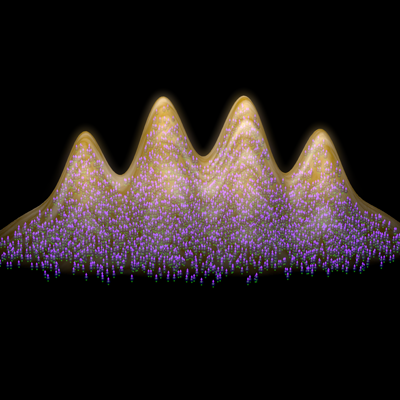In a joint work from the RARE and ERBIUM team as well as our theory collaborator from IQOQI, Rick van Bijnen, we have observed hallmarks of supersolidity in dipolar quantum gases of Erbium and Dysprosium. Our work is highlighted in a Viewpoint article in Physics by T. Donner.
Supersolidity is a paradoxical state, arousing the researchers’ interest for more than half a century, in which the matter is both crystallized and superfluid. In a dipolar gas, this would mean that the tens of thousands of particles spontaneously organize in a self-determined crystalline structure while sharing the same macroscopic wavefunction.
In our two experiments in Innsbruck, we observe these characteristics of supersolidity by tuning the interaction strength between the particles, in both erbium and dysprosium quantum gases. While in erbium the supersolid behavior is only transient, in line with recent remarkable experiments in Pisa and in Stuttgart, our dysprosium realization shows an unprecedented stability. Here, the supersolid behavior not only lives long but can also be directly achieved via evaporative cooling, starting from a thermal sample, yielding a stationary state with supersolid properties at thermal equilibrium. Our observations pave the way for future experiments and theories, in particular toward probing the specific elementary excitations of the state with supersolid properties and its superfluid behavior, as the gas’ state is little affected by dissipation and excitation.
The present work was realized both at the Institute for Experimental Physics of the University of Innsbruck and at the Institute for Quantum Optics and Quantum Information of the Austrian Academy of Sciences. It was financially supported by the Austrian Science Fund FWF, the Austrian Academy of Sciences and the European Union. It has been the topic of a press release and together with the results from Pisa and Stuttgart, of a Viewpoint article in Physics

